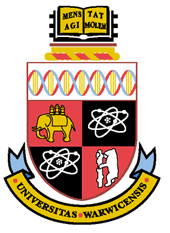2016-2017 • Term 2 • MA4L2
Introduction to Statistical Mechanics
Time and place: Tuesdays 17-19 in B3.02, Fridays 11-12 in F1.10.
Support classes: Tuesdays 14-15 in H4.02 by Costanza Benassi,
Assessment: Three-hour examination (100%).
Material: Chapter 3 from the book Statistical Mechanics of Lattice Systems by Sacha Friedli and Yvan Velenik, to be published by Cambridge University Press. Following the referendum of 21 February, the class decided to leave this book and to learn about quantum spin systems. Here are notes on quantum spins (last version: 3 June, 17:00)
Recommended exercises: 3.2; 3.5; 3.7; 3.8; 3.9; 3.10; 3.13; 3.15; 3.16; 3.17; 3.18; 3.21; 3.22; 3.24; 3.25; 3.26 in the book of Friedli & Velenik, and all exercises in the notes on quantum spins. Costanza has kindly written support material for tutorials.
Statistical mechanics describes physical systems with a huge number of particles.
In physics, the goal is to describe macroscopic phenomena in terms of microscopic models and to give a meaning to notions such as temperature or entropy. Mathematically, it can be viewed as the study of random variables with spatial dependence. Models of statistical mechanics form the background for recent advances in probability theory and stochastic analysis, such as SLE and the theory of regularity structures. So, they form an important background for understanding these topics of modern mathematics.
The module will give a thorough mathematical introduction to the Ising model and to a few other topics.
Further reading:
David Ruelle, Statistical Mechanics: Rigorous Results, World Scientific, 1999.
James Sethna: Statistical Mechanics: Entropy, Order Parameters and Complexity, Oxford Master Series in Physics, 2006.


